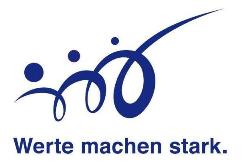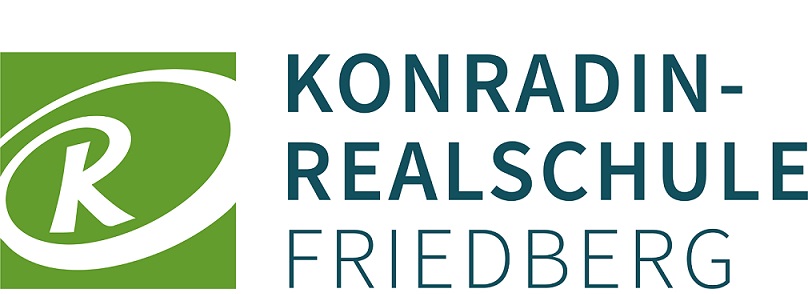- +49 (0)821 90 52 40
- Rothenbergstr. 4 | 86316 Friedberg
- verwaltung@konradin-realschule.de
Leitlinien
Die obersten Leitlinien der Erziehungs- und Unterrichtsarbeit an der Konradin-Realschule Friedberg liefern selbstverständlich die Erziehungs- und Bildungsziele, die in Artikel 131 unserer Bayerischen Verfassung verankert sind: „Die Schulen sollen nicht nur Wissen und Können vermitteln, sondern auch Herz und Charakter bilden“. Gerade die Herzens- und Charakterbildung der uns anvertrauten Kinder und Jugendlichen wollen wir über eine qualifizierte Wissensvermittlung hinaus in Zeiten eines heftig beklagten Werteverlustes und einer vielerorts aus den Fugen geratenen Welt besonders fördern.

Eine nachhaltige Wegzehrung für das Leben in einer „schnelllebigen Mediengesellschaft“ mit wachsenden Ansprüchen besteht aus einer tragfähigen Ausstattung an Grundwissen und Kompetenzen sowie einer echtenIdentifikation mit anerkannten Tugenden und Werten. Dem trägt das Wirken der Lehrkräfte an der Konradin-Realschule Rechnung. In den drei Wahlpflichtfächergruppen I, II und III mit den Profilfächern Französisch und Kunsterziehung werden die Schülerinnen und Schüler auf einen gelingenden Eintritt ins Berufsleben wie auf den Übertritt in eine weitere Schullaufbahn an der benachbarten Fachoberschule und anderen Bildungseinrichtungen bis hin zum Hochschulstudium vorbereitet.

Die Balance zwischen der Kernaufgabe der Schule, einem qualifizierten Unterricht, und einem an Bedeutung gewinnenden Umfeld, einem reichhaltigen und vielfältigen Schulleben, dieses Gleichgewicht zwischen „Pflicht und Kür“ kommt im Schullogo zum Ausdruck: Ein Quadrat symbolisiert den rechtlichen und instrumentellen Rahmen der Schule, die Schulordnung, den Lehrplan, die Stundentafeln, die Prüfungen. Eine integrierte Spirale greift dynamisch über das starre Geviert hinaus; sie versinnbildlicht das pulsierende Schulleben der Konradin-Realschule mit vielerlei Facetten. Ähnlich einem Vexierbild sind zugleich die Buchstaben K für unseren Namensgeber König Konradin und R für die Schulart Realschule zu erkennen.
Für alle Angehörigen unserer Schulgemeinschaft gilt als Leitsatz der täglichen Arbeit ein Satz unseres ehemaligen Kultusministers, Dr. Ludwig Spaenle: „Für mich steht der Mensch im Mittelpunkt der Bildungsarbeit“.

In diesem Sinne wirken alle Beteiligten in gegenseitigem Vertrauen zusammen. Schüler, Eltern und Lehrer trachten bei aller konstruktiven Kritik nach einem respektvollen Umgang.
Auch in der engen Zusammenarbeit mit außerschulischen Partnern wie dem Sachaufwandsträger, benachbarten Schulen, örtlichen Vereinen, Ämtern und Institutionen, der Stadtkapelle Friedberg, den Partnerschulen in Frankreich, England und Italien sowie der Partnerfirma wird ein freundschaftlicher Ton gepflegt. Die Konradin-Realschule sieht sich als profilierte und in der Öffentlichkeit geachtete Bildungseinrichtung und ist bestrebt, ihr hohes Ansehen in der Stadt Friedberg und im Landkreis Aichach-Friedberg, dem „Wittelsbacher Land“ weiter zu mehren.
Als Anerkennung ihrer besonderen außerunterrichtlichen Aktivitäten in den Bereichen Musische Bildung, Willkommenskultur und Präventionsarbeit erhielt die Konradin-Realschule Auszeichnungen von Seiten des Bayerischen Staatsministeriums für Bildung und Kultus, Wissenschaft und Kunst.
Die Hausordnung, die als verbindliches Regelwerk im breiten Konsens in der Schulfamilie Lehrern, Eltern und Schülern über eine allgemeine Orientierung hinaus konkrete Verhaltensregeln als Leitplanken im schulischen Alltag liefert, wurde 2015 aktuellen Entwicklungen angepasst und als „Schulverfassung“ mit Wirkung vom 1. Januar 2016 neu in Kraft gesetzt.
Konradin Realschule
We firmly believe that the internet should be available and accessible to anyone, and are committed to providing a website that is accessible to the widest possible audience, regardless of circumstance and ability.
To fulfill this, we aim to adhere as strictly as possible to the World Wide Web Consortium’s (W3C) Web Content Accessibility Guidelines 2.1 (WCAG 2.1) at the AA level. These guidelines explain how to make web content accessible to people with a wide array of disabilities. Complying with those guidelines helps us ensure that the website is accessible to all people: blind people, people with motor impairments, visual impairment, cognitive disabilities, and more.
This website utilizes various technologies that are meant to make it as accessible as possible at all times. We utilize an accessibility interface that allows persons with specific disabilities to adjust the website’s UI (user interface) and design it to their personal needs.
Additionally, the website utilizes an AI-based application that runs in the background and optimizes its accessibility level constantly. This application remediates the website’s HTML, adapts Its functionality and behavior for screen-readers used by the blind users, and for keyboard functions used by individuals with motor impairments.
If you’ve found a malfunction or have ideas for improvement, we’ll be happy to hear from you. You can reach out to the website’s operators by using the following email
Our website implements the ARIA attributes (Accessible Rich Internet Applications) technique, alongside various different behavioral changes, to ensure blind users visiting with screen-readers are able to read, comprehend, and enjoy the website’s functions. As soon as a user with a screen-reader enters your site, they immediately receive a prompt to enter the Screen-Reader Profile so they can browse and operate your site effectively. Here’s how our website covers some of the most important screen-reader requirements, alongside console screenshots of code examples:
Screen-reader optimization: we run a background process that learns the website’s components from top to bottom, to ensure ongoing compliance even when updating the website. In this process, we provide screen-readers with meaningful data using the ARIA set of attributes. For example, we provide accurate form labels; descriptions for actionable icons (social media icons, search icons, cart icons, etc.); validation guidance for form inputs; element roles such as buttons, menus, modal dialogues (popups), and others. Additionally, the background process scans all the website’s images and provides an accurate and meaningful image-object-recognition-based description as an ALT (alternate text) tag for images that are not described. It will also extract texts that are embedded within the image, using an OCR (optical character recognition) technology. To turn on screen-reader adjustments at any time, users need only to press the Alt+1 keyboard combination. Screen-reader users also get automatic announcements to turn the Screen-reader mode on as soon as they enter the website.
These adjustments are compatible with all popular screen readers, including JAWS and NVDA.
Keyboard navigation optimization: The background process also adjusts the website’s HTML, and adds various behaviors using JavaScript code to make the website operable by the keyboard. This includes the ability to navigate the website using the Tab and Shift+Tab keys, operate dropdowns with the arrow keys, close them with Esc, trigger buttons and links using the Enter key, navigate between radio and checkbox elements using the arrow keys, and fill them in with the Spacebar or Enter key.Additionally, keyboard users will find quick-navigation and content-skip menus, available at any time by clicking Alt+1, or as the first elements of the site while navigating with the keyboard. The background process also handles triggered popups by moving the keyboard focus towards them as soon as they appear, and not allow the focus drift outside it.
Users can also use shortcuts such as “M” (menus), “H” (headings), “F” (forms), “B” (buttons), and “G” (graphics) to jump to specific elements.
We aim to support the widest array of browsers and assistive technologies as possible, so our users can choose the best fitting tools for them, with as few limitations as possible. Therefore, we have worked very hard to be able to support all major systems that comprise over 95% of the user market share including Google Chrome, Mozilla Firefox, Apple Safari, Opera and Microsoft Edge, JAWS and NVDA (screen readers).
Despite our very best efforts to allow anybody to adjust the website to their needs. There may still be pages or sections that are not fully accessible, are in the process of becoming accessible, or are lacking an adequate technological solution to make them accessible. Still, we are continually improving our accessibility, adding, updating and improving its options and features, and developing and adopting new technologies. All this is meant to reach the optimal level of accessibility, following technological advancements. For any assistance, please reach out to